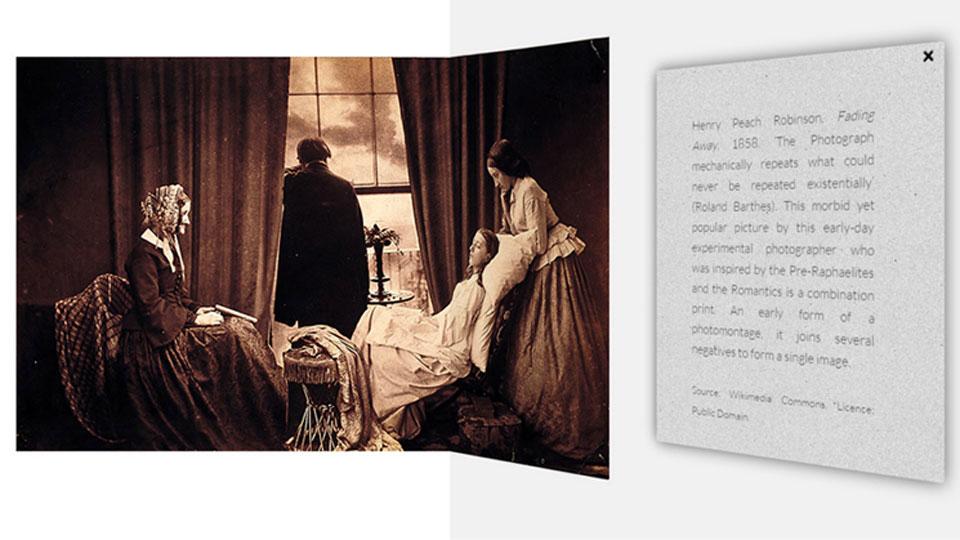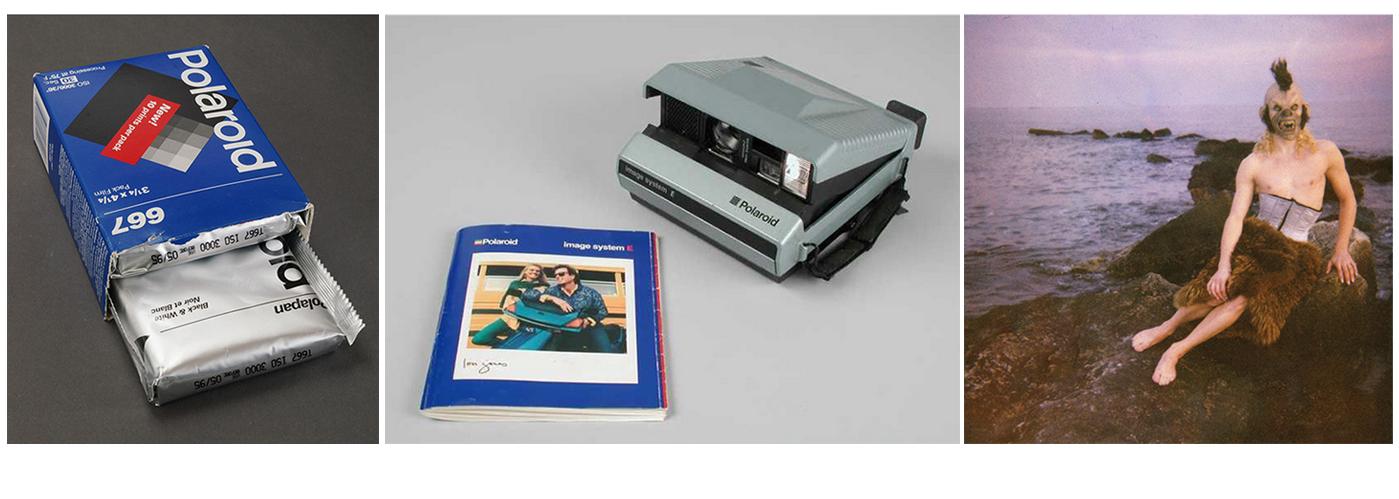“We are all photographers now”: how photography has changed the way we live in the digital age
Primary page content
Photomediations: An Open Book explores our evolving relationship with photography in an online ‘coffee table’ book featuring over 200 open access images.

The last decade has seen photography freed from the pages of glossy magazines and family photo albums to become one of the primary means through which we communicate online. Over 70% of us now carry a networked high definition digital camera in the form of a smart phone and if a picture speaks a thousand words, then our social media feeds tell us a great deal about our changing relationship with photography and the photographic image. Photomediations: An Open Book explores the fast evolving relationship between photography and other media through a series of striking images and articles.
“…we are all not just photographers today: we have also become distributors, archivists and curators…”
Professor Joanna Zylinska, project lead.
It began with the idea of the coffee table book - the oversized hardback whose heavy pages and rich images occupy the space between domestic prop and conversation piece in our living rooms. But how can this very particular form be reimagined as an online experience? With over 200 images from a range of sources including established cultural institutions, renowned photographers and social media feeds, Photomediations tells a unique and important story about our changing relationship with photography.
What first strikes you about Photomediations is that despite its digital, online nature, it follows many of the conventions of a printed book. It is organised by thematic ‘chapters’ and you navigate its content through an interface that references the turning of pages. Hyperlinks are notable by their absence and although you can jump between ‘chapters’ using a sidebar menu, the way you engage with the content is constrained much in the same way it would be with a printed book. Perhaps more obviously, the text is referred to as ‘The Book’ throughout, a juxtaposition with its digital form that seems like a pointed celebration of the book as a material object that also shows how books are being remediated in the digital age. So this project is not only concerned with the changing role of photography, but with the way the internet is interacting with and affecting different media and how we engage with them.
A nuanced definition of ‘openness’ is key to the project. The term is not used to imply a free-for-all, but rather a form of openness that is curatorially led. The mere fact that the Book exists online makes sharing it easy and chimes with broader discussions around open access to research that challenges traditional publishing models, such as journals. Moreover, the Book is composed of images drawn from open repositories under various creative commons license agreements and has three ‘open’ supplementary chapters that allow it to develop over time through user contributions.
The Book’s four main chapters are prefaced by specially commissioned articles exploring the conceptual landscape the images inhabit. These are followed by long sequences of captioned photos that develop a kind of visual narrative about the history of photography and its place in the present; in one we see a stock image of a 1980’s polaroid camera sandwiched between a polaroid of a costumed man posed on a rocky coast and an image of polaroid film with the caption ‘Polaroids develop illegitimately before our eyes in broad daylight’. The images are experienced in sequence which throws up lots of interesting relationships and potential insights. According to Zylinska, the captions that accompany each image encourage readers to ‘slow down’ and meaningfully engage with the content, a callback to a time when photographs had titles and a nod to the format that inspired the project.
The final main chapter, ‘The Networked Image’, goes beyond looking at the photograph as a printed, material object to consider it as part of the interconnected and constantly changing landscape of the internet. Here we discover that the practice of photography has been fundamentally altered by the advent and saturation of smartphone technology and social media, creating the space in which the selfie has emerged. Perhaps it’s a poignant example of a behaviour that the generation of so-called ‘digital natives’ can playfully take part in, while those of us for whom the photo retains a residual formality are left wrong-footed, challenged and embarrassed.
The three ‘open’ chapters that supplement the Book depart from the conventions of the printed text established in the previous chapters and engage users in a more collaborative way characteristic of web 2.0. They include a user generated tumblr image blog, a wiki with links to related reading materials and an online exhibition platform associated with the project, which will host a project-specific exhibition in 2016. In different ways, these additions demonstrate the functionality and associated behaviours spurned by the ‘main’ chapters of the Book. This departure points to a looser, more collaborative dynamic that throws the Book into relief as a more crafted, refined exploration of the relationship between material forms (printed photographs / hardcover coffee table books) and their digital counterparts. To complete the circle, a physical copy of the Book featuring academic and curatorial texts on photomediations will be published by Open Humanities Press in late 2015.
Photomediations: An Open Book is a collaborative venture between Goldsmiths and Coventry University and is led by Joanna Zylinska, Professor of New Media and Communications at Goldsmiths. The project team includes Dr Kamila Kuc and Dr Michael Wamposzyc from Goldsmiths, and Jonathan Shaw, Ross Varney and Professor Gary Hall from Coventry. The project is part of the EU-funded Europeana Space grant, which aims “to create new opportunities for employment and economic growth within the creative industries sector based on Europe’s rich digital cultural resources.”
Promotional video by Ross Varney and Jonathan Shaw for the online project Photomediations: An Open Book